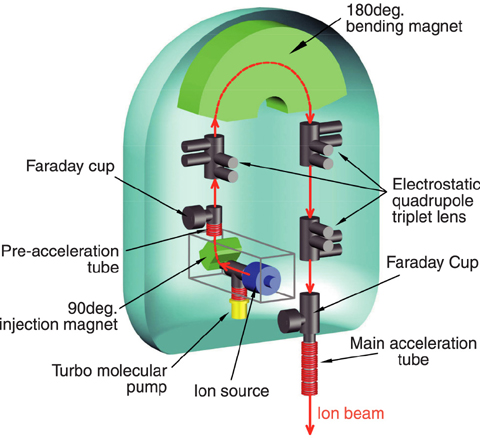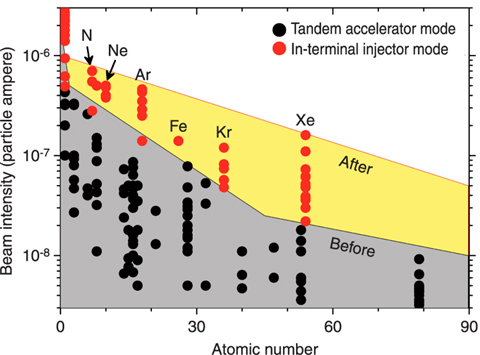
Fig.12-3 Layout of in-terminal heavy ion injector

Fig.12-4 Ion species and intensity of beam accelerated by in-terminal heavy ion injector
Nuclear reactions, nuclear structures, and chemical properties of super heavy elements are researched using high energy heavy ions from the JAEA tandem accelerator. The ion beams are used also for research involving irradiation of nuclear reactor fuel because the beam energy can be tuned to the energy of fission fragments. A high intense heavy ion beam is necessary for the production of the super heavy elements with short lifetimes and small production rates. This irradiation is also necessary for research where particle flux as in a nuclear reactor is needed.
The tandem accelerator efficiently works because the carbon foil in the terminal changes negative ions to positive multi-charged ions. Carbon foils are, however, consumed quickly, and are not suitable for intense heavy ion beam acceleration. Therefore, we started developing a heavy ion injector (Fig.12-3) in the terminal of the accelerator to accelerate the positive ions from a permanent magnet type electron cyclotron resonance (ECR) ion source. The energy is also increased because higher charge state ions are generated by the ECR ion source than carbon foil.
The high voltage terminal is in a severe environment, i.e. it is filled with the pressurized insulation gas to 5.5 atm and itself is held at a voltage of 20MV at maximum. The capability to withstand high pressure and electrical discharge is indispensable to the in-terminal ion injector. The components of the injector, namely the ion source, beam line devices, power supplies and vacuum components, have been confirmed to be pressure-resistant. A control system with optical fibers and circuits was designed to prevent damage from electrical discharges, and these electrical devices were heavily shielded. Since ion pumps do not work for inert rare gases, a turbo molecular pump and a rotary pump were newly developed for high pressure gas. The exhaust gas from the pumps was designed to accumulate in a closed vessel. Even when the pumping system fails, the high vacuum is held.
The accelerated ions from new injector are shown in Fig.12-4. Rare gas ion beams can be generated, and the intensities were 2~10 times those of conventional devices. Xe ion energy reached 300MeV, making this the only accelerator that provides beams in a wide energy range of 50~300MeV. In addition, the beam quality was greatly improved compared with the tandem acceleration mode because there was neither the energy spread nor the beam divergence which is caused by the carbon foil.
Intense beams of Kr and Xe in this way have become available not only for production of super heavy elements but also irradiation research on high burn-up nuclear fuel.